However, ChatGPT needs some help.
It needs solid prompts, otherwise, its writing can be very generic.
It cannot come up with original concepts on its own or use its imagination.

It needs to be given specific requests (called prompts) to get to generate bodies of text.
Understanding Fiction Writing
There’s a lot that goes into creating an interesting and engaging story.
This can make it quite tricky to generate useful prompts.
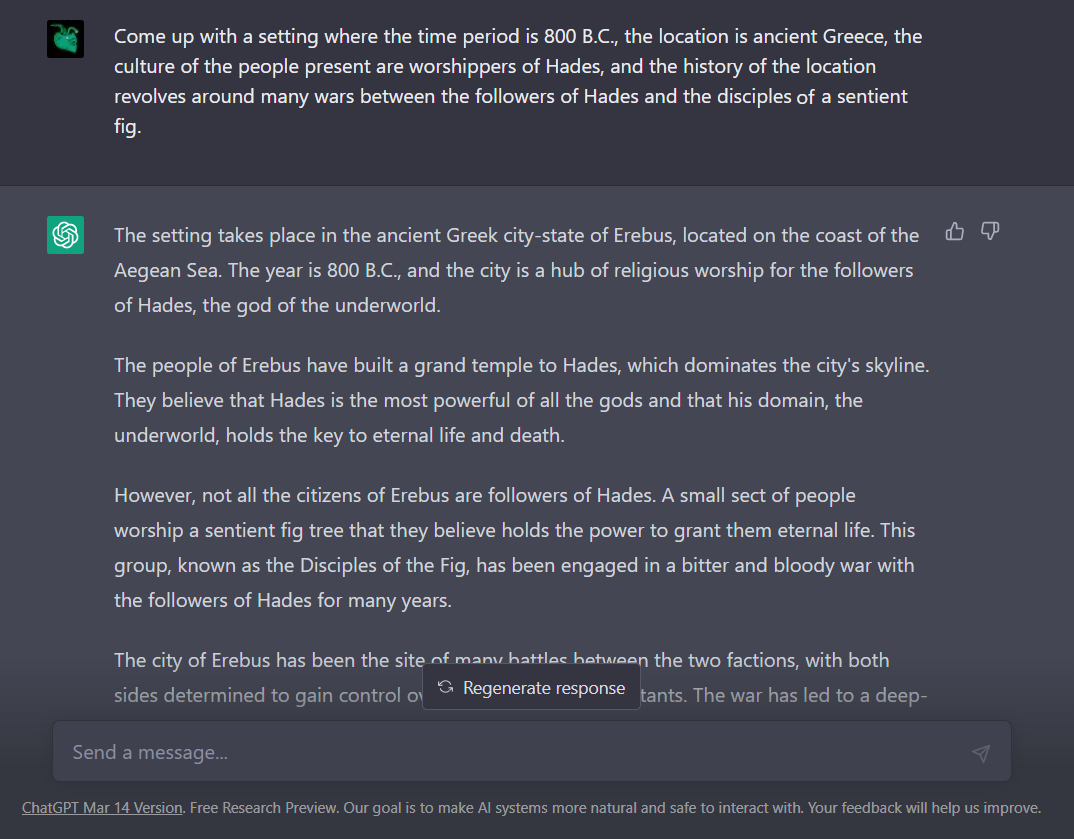
Plot
The sequence of events that make up the story.
ChatGPT has been trained through many texts—including fiction ones.
When asked to generate fiction, it tries to replicate patterns found in existing works of fiction.
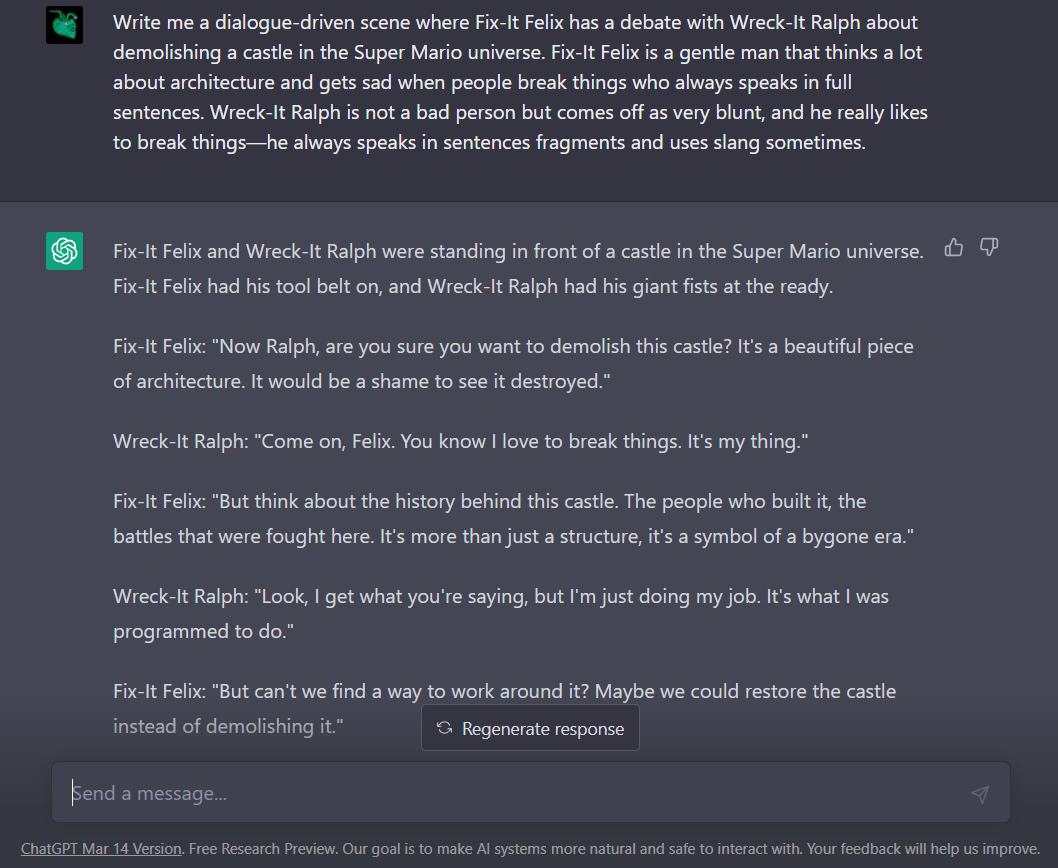
It never deviates from this formula unless specifically directed otherwise.
Characters
The beings involved in the story.
These can be people, animals, or other kinds of beings.
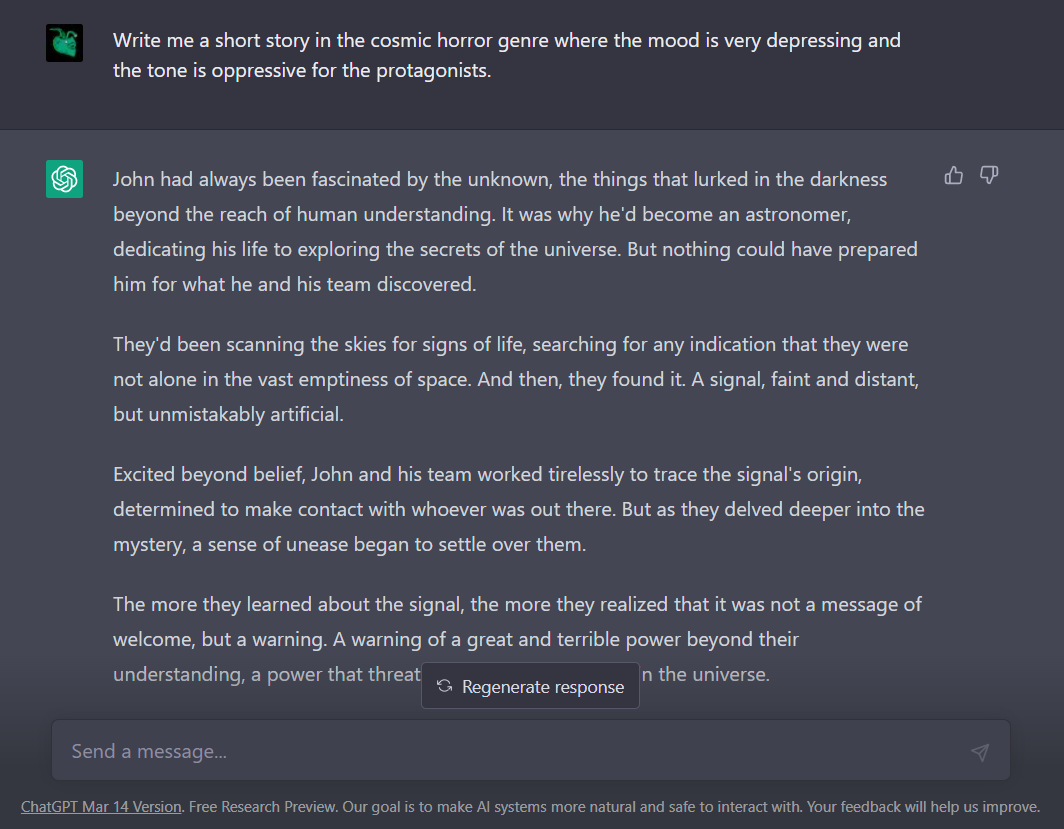
Each should have their own distinct personality, motivations, and conflicts.
By having a dynamic cast of characters, a story becomes more entertaining and relatable.
Do you see a pattern yet?
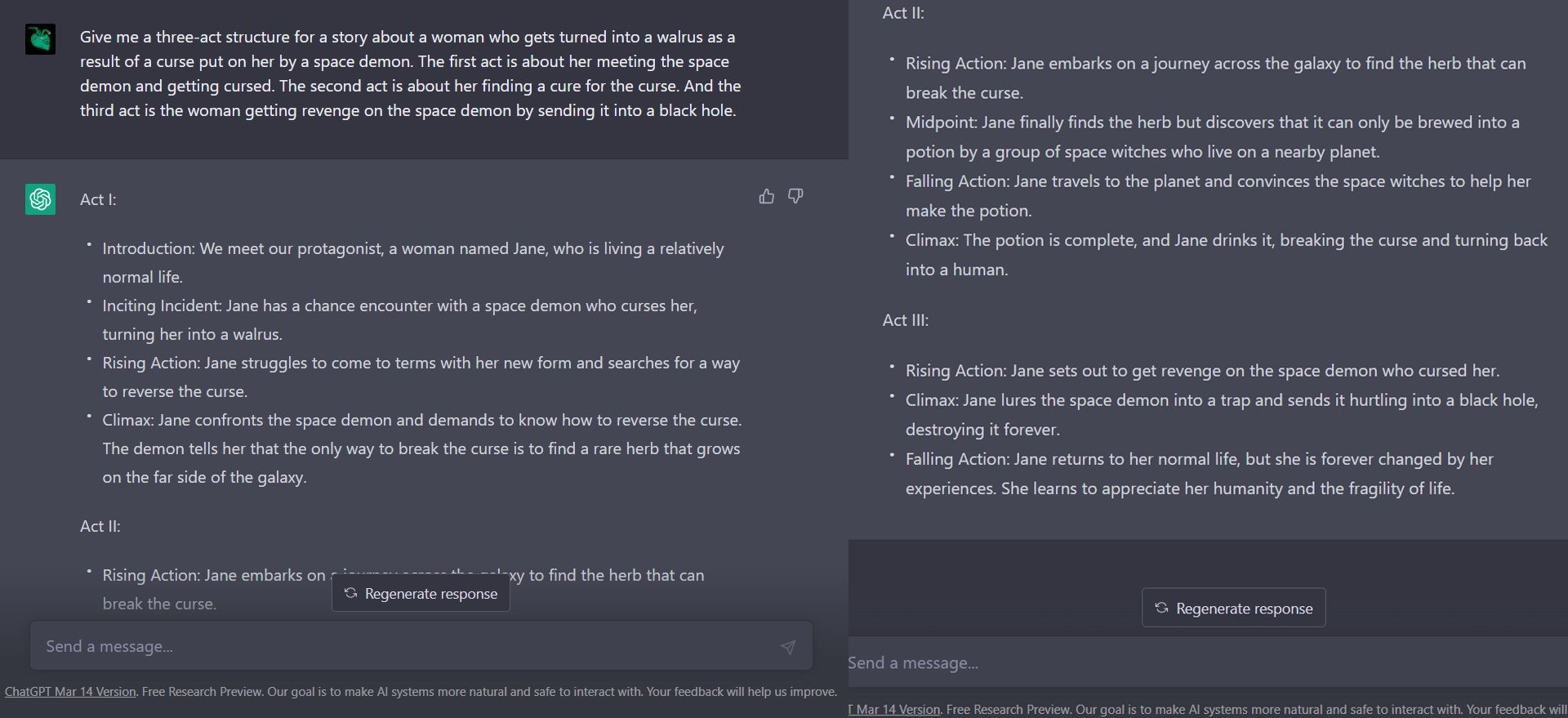
Setting
The time and place where the story occurs.
It includes the physical environment, culture, historical context, and many more worldly components.
Perspective
The point of view from which the story is told.

It can be first-person, second-person, or third-person.
It’s important not to swap between any of the aforementioned three unless you have a great reason.
If you do, you may end up with confusing text that leaves the reader lost and frustrated.
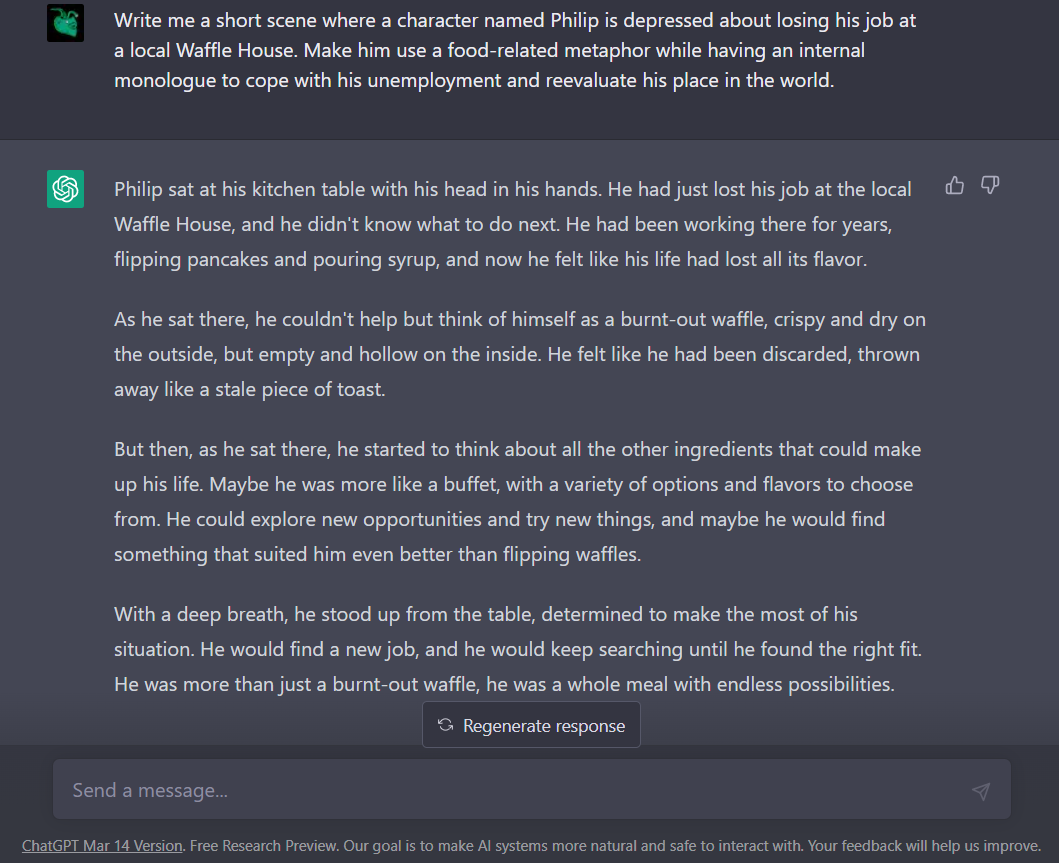
ChatGPT tries to pick the perspective that it thinks is best for the prompt.
This ends in a narrative that’s all over the place and confusing.
It has no formula for generating a point of view.
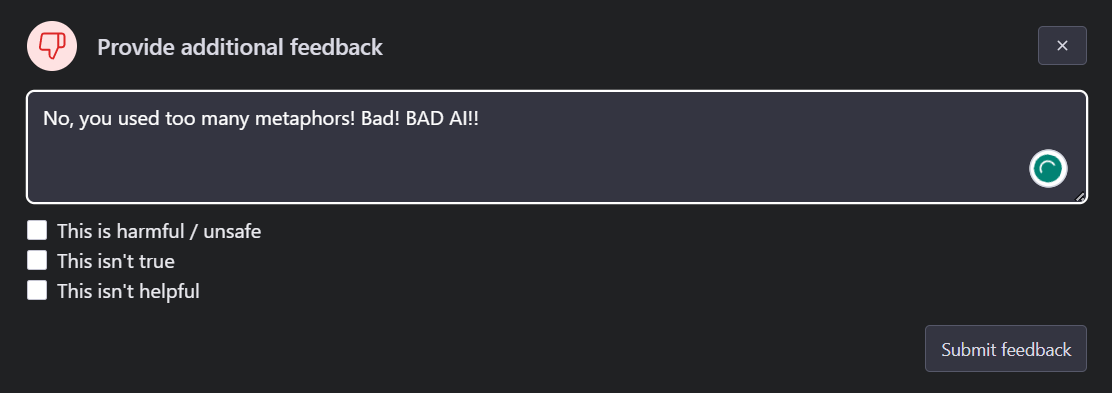
Theme
The central messages or ideas of the story.
These can be straightforward and easy to grasp, or obscure and shrouded in mystery.
This ties into the components it analyzes from existing works.
It basically just copies the themes from similar stories unless you specify otherwise.
Dialogue
The spoken or written words between characters.
This is the avenue through which characters reveal their personalities, relationships, and conflicts.
Furthermore, dialogue breaks up the prose in ways that result in better readability for most audiences.
ChatGPT uses traits of the characters in a story to generate dialogue between them.
It also tries to keep a story’s context in mind.
Style
The author’s writing style.
This includes word choice, tone, and the use of literary devices.
It contributes to the overall mood and atmosphere of the story.
An author’s life, upbringing, moral values, and more contribute to their writing style.
However, don’t expect ChatGPT to perfectly emulate a famous writer.
Incorporating flashbacks can be a solid way to reveal a backstory in a direct manner.
There are sometimes important story components that you’re able to’t bring up directly.
As such, using a bit of exposition can close unnecessary gaps in your world-building.
However, you want to use exposition sparingly, as too much can result in boring text.
Give ChatGPT a parameter for how much exposition to include so that it doesn’t get carried away.
For example, include “Use two sentences of exposition” in your prompt for a scene.
Building a Solid Plot Structure
Start by giving clear goals for a plot’s concept.
Outline the major plot points in the story.
This is pretty much the exact formula that ChatGPT is looking for so that answer your plot equation.
Provide clear character goals and motivations.
Consider breaking down your story into three, four, or five acts.
You don’t want a story with an elongated beginning and short end—or similar imbalances.
This will help the AI model generate more nuanced and complex characters.
Guiding ChatGPT’s output in this regard will help your characters become more relatable.
Provide ChatGPT with clear character descriptions and sample dialogue to guide its output.
Avoid using overly formal language.
Instead, focus on creating dialogue that sounds like something real people would say.
have a go at emulate a conversation you’ve had recently to practice coming up with good dialogue prompts.
Dialogue should be grounded in the context of the story.
Furthermore, dialogue is often more engaging when there is an underlying subtext.
This can be achieved through the use of indirect language, sarcasm, or implication.
This is different than coming up with an initial style for ChatGPT with which to write fiction.
Mention physical aspects of the landscape, the appearance of characters, and why particular objects are important.
Employing Figurative Language
Figurative language refers to metaphors, similes, and allusions.
Such writing techniques are more subtle ways of getting across the importance of subjects, themes, and more.
As such, readers will become more immersed in the story if you tell ChatGPT to include such details.
Varying Sentence Structure
You want to have varying sentence structures for multiple reasons.
Firstly, it makes the text more interesting to readers.
Shorter sentences—including sentence fragments—can make a simple point resonate in a reader’s mind.
This can be done through both dialogue and prose.
How Machine Learning Works
The first step in machine learning is to collect and organize data.
This might involve removing irrelevant or duplicate data points, standardizing the data, and more.
After the data is preprocessed, it can be used to train a machine learning algorithm.
During the training phase, the algorithm analyzes the data to identify patterns and relationships.
When getting ChatGPT to write fiction, this last part comes about when you give it prompts.
ensure you regularly give ChatGPT feedback so that it has a chance to learn what you want from it.
If you don’t, you’re unlikely to get the results you want.
ChatGPT can only improve if you help it.
It cannot make improvements on its own.
This can be done with all aspects of a story; not just the genre-related points.
Use this method for the choice of words, theme implementation, character personalities, and more.
You’ll need to experiment a lot to get a suitable product from ChatGPT.
Keep reading stories from other authors and practice writing without ChatGPT.
Related:ChatGPT: How to Use the AI Chatbot for Free